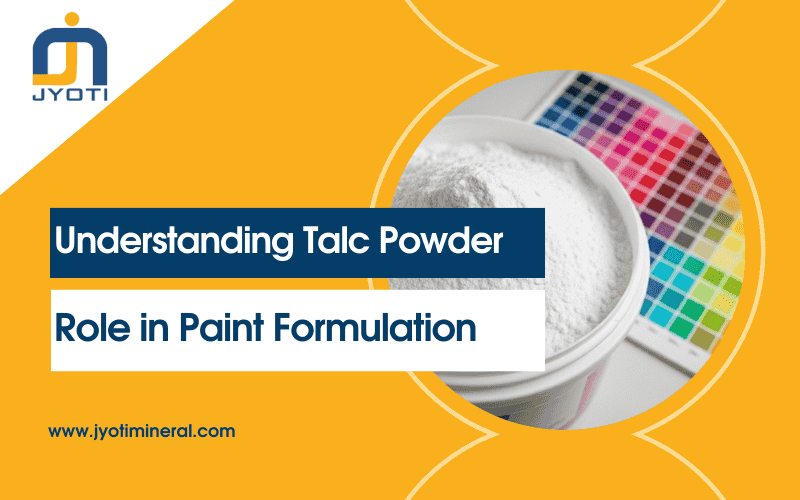Paint is more than just color on a surface, it’s a carefully engineered product where each ingredient contributes to appearance, durability, and performance. One such ingredient is talc powder, a naturally occurring mineral that plays a big role in the paint and coatings industry. In particular, the use of talc powder for paint industry applications has become more important due to its unique properties. This article will look into how talc powder for the paint industry to enhance paint formulation, focusing on particle size, functionality, and performance benefits.
Understanding Talc Powder
Talc is a soft mineral composed of magnesium, silicon, and oxygen. When ground into a fine powder, it has characteristics that make it suitable for various industrial uses. In paints, talc acts as a functional extender, improving both physical and chemical properties of the final product. Its platy structure, high oil absorption, and excellent dispersibility make it a favorite among formulators.
Why Particle Size Matters
Among the most important aspects of applying talc to paint is particle size. The lower the particle size, the more even the paint looks. Particle size control prevents settling, keeps the paint mixed, and enhances coating. Matte finishes can be achieved with coarser talc, while shiny and smooth finishes are ideal with finer grades.
Correct particle size keeps the film strong enough to prevent cracking and peeling in the long term. Uniform particle size distribution keeps the color and application uniform, which is critical in decorative and industrial coatings.
Performance Benefits in Paints
Talc powder offers many benefits that contribute to the overall quality of the paint:
- Better Coverage and Opacity
Talc enhances the hiding power of the paint by acting as a spacing agent for pigments. This allows better pigment dispersion, resulting in brighter colors and better coverage with less material.
- Improved Durability
Its platy structure provides reinforcement to the paint film, making it more resistant to weathering, cracking, and abrasion. This is especially important for exterior applications where exposure to sunlight and moisture is high.
- Smooth Finish and Texture
Talc contributes to a smoother surface finish by reducing surface irregularities. It also imparts a silky feel to the paint, which is preferred in many interior decorative applications.
- Better Paint Flow and Application
Thanks to its natural lubricating properties, talc improves the flow and leveling of the paint. This makes the application easier, whether by brush, roller, or spray, and helps achieve a uniform coating.
Talc Powder for Paint Industry: What to Consider
When selecting talc powder for paint industry applications, consider brightness, oil absorption, moisture content, and pH levels. High purity talc with minimal impurities means better performance and consistency. Environmental factors and regulatory compliance should also be considered, especially for paints used in sensitive areas like homes, schools, and hospitals.
Eco Friendly and Sustainable Use
The world is looking for ways to help the environment and the world of paint is also changing. Talc powder is a natural mineral that is part of the idea of making eco friendly products. It helps improve performance and that means you apply less material to get the same coverage and strength which helps save resources.
Trusted Source for Quality Talc
If you’re looking for top-quality minerals for coatings, Jyoti Mineral Industries is a trusted choice. They offer reliable products made to meet the needs of the paint industry. With a strong focus on quality, purity, and customer support, they provide special types of talc that help paint makers get the best results.
From particle size control to film properties, talc plays a big role in modern paint systems. Its multifunctional benefits, such as surface finish, coverage, durability, and application, make it a valuable component in advanced formulations. By choosing the right grade, manufacturers can develop coatings that not only look good but also perform well.

